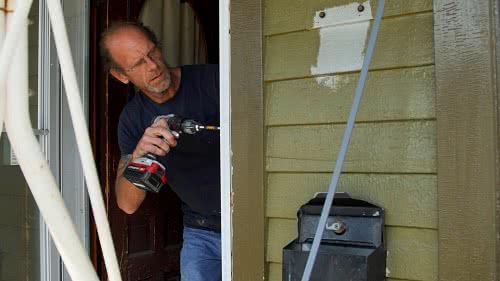This article is part of a series in which a National Funding customer shares their insights on finding a loan specialist, giving back to the community and expanding one’s business.
One of the best ways to grow a successful business is to tap into underserved markets. You’ll have less competition and eager customers who’ve been looking for your products or services. A poster child of how to expand a business into new markets is Master Handyman, LLC of Cleveland, Ohio. Co-owners Dan and Cheryl Dailey recently transitioned the company from residential home improvements to commercial work after they discovered the underserved market could transform their business for the better.
The journey started in 2012 when Cheryl got a call from a potential customer who asked if they did commercial repairs. She consulted Dan who said they did not. In business since 1991, he had never pursued commercial work because it required lots of extra paperwork. Cheryl told Dan she knew how to handle the paperwork, so when the next call for commercial work came in, the answer was “yes.”
“Very few companies in northeast Ohio do commercial repairs,” Cheryl says. “Large construction firms don’t take small jobs; it’s more efficient going from big job to big job. For smaller handyman companies, commercial repair jobs are too big and they have to wait to get paid, unlike residential work where you get a draw from the customer and a check for the balance at the end.”
Working Through Challenges
Cheryl and Dan tested the waters by taking one new commercial customer a month. The couple ran into quite a few challenges, especially with cash flow. “With commercial work, we have to wait up to three or four months to receive payment for a completed job,” Cheryl says. “That means we are fronting money for materials and labor.”
Self-funded up to this point, Cheryl and Dan had the courage to take the leap and set up a loan through National Funding to help address their cash flow issues. With this financing available, the business could work with commercial payment timelines.
Another challenge was retraining employees who were used to working in a more casual environment. “With residential work, you interact with homeowners, but in a commercial business you’re working around employees who are trying to serve their customers,” Cheryl says. “We have to have the least impact on their daily business operations other than making the place look better with our repairs. Our employees had to learn how to conduct themselves as professionals.”
Even though there were growing pains, Cheryl stuck with it, recognizing the potential. “It took about three years to be completely commercial,” she says. “We tried faster but sometimes we would have to cash flow the business with a residential customer.”
Cheryl and Dan knew they had made the right decision after the homeowner on their last residential project refused to pay. “None of our commercial customers have not paid us,” says Cheryl. “From time to time residential customers don’t pay and we have to file a lien against their home. Commercial work is so much easier. We send a bill for what we agreed on. Payment might come in 30, 90 or 120 days, but it will come in. You can’t feed a family on signed unpaid residential contracts.”

A Master Handyman employee repairs a residence
Tips for Finding Underserved Markets
For business owners wondering how to expand a business into new markets, Cheryl has three suggestions:
1. Listen to your customers’ needs.
“If you get customers asking, ‘Do you do this or that?’ chances are that’s an underserved market and they’ve been calling around and can’t find somebody to do it,” she says.
2. Be prepared to learn as you go, seeking advice from others who have done it before you.
“Network with similar businesses that are out of your area,” says Cheryl. “We networked with companies in Georgia and California. They were not competitors and were more willing to be honest and help answer our questions.”
3. When the market has proven itself to be profitable, start letting customers know you can serve them.
Today, Cheryl and Dan have started reaching out to potential customers, changed their website to reflect their new area of business and built the infrastructure needed to take on multiple commercial customers. “We Google facility management companies, and reach out through email or by clicking links that ask if you want to sign up to be a vendor,” says Cheryl. “Once we get into their system, they send us a work order when jobs are available.”
The expansion into commercial work has helped Cheryl and Dan find a unique niche in an underserved market, fueling the company’s continued growth.
As part of our series, learn more about Master Handyman’s journey, including how Cheryl and Dan give back to the community that has helped them thrive, and how they found the right lender to help them achieve their goals. You can also learn more about their story through our video feature.









